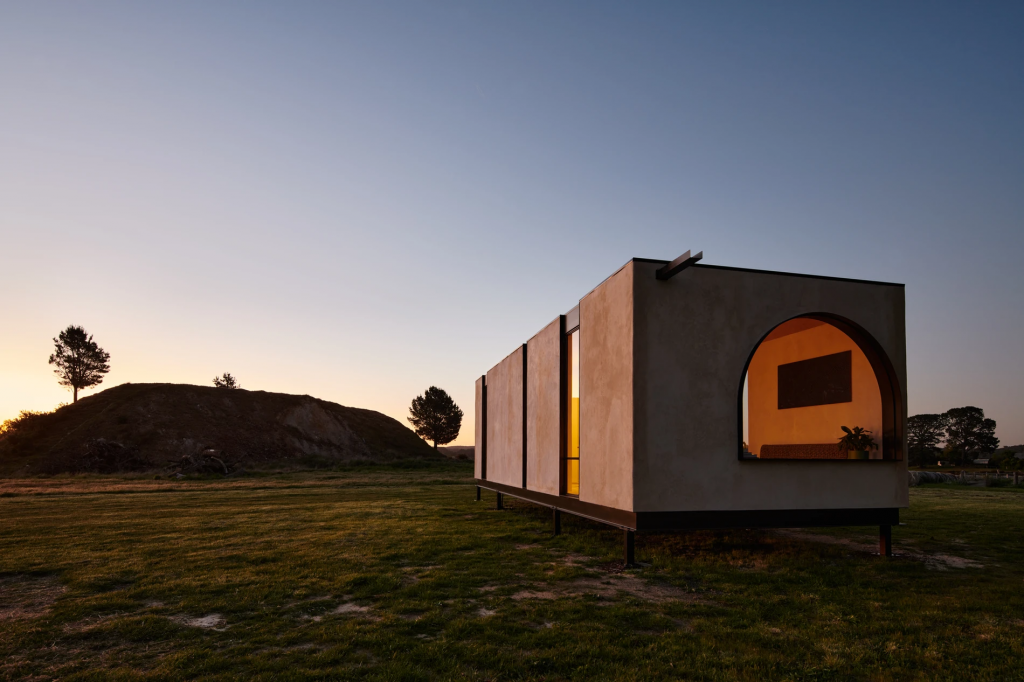
Thermal Values and Hempcrete, more than just numbers
In this article, we will delve into the thermal values of hempcrete, its heat retention capabilities, and the advantages of its embodied mass and breathability compared to conventional building materials like drywall and fiberglass insulation.
Thermal Insulation and Heat Retention
One of the most notable features of hempcrete is its exceptional thermal insulation properties. Hempcrete has a thermal conductivity ranging between 0.06 to 0.09 W/m·K, which is comparable to traditional insulation materials. This low thermal conductivity means that hempcrete is highly effective at reducing heat transfer, keeping interiors warm in the winter and cool in the summer.
Moreover, hempcrete’s high thermal mass contributes significantly to its ability to retain heat. Thermal mass refers to a material’s capacity to absorb, store, and release heat. Hempcrete’s density and composition allow it to absorb heat during the day and slowly release it at night, providing a more stable indoor temperature. This characteristic reduces the need for artificial heating and cooling, leading to energy savings and a smaller carbon footprint.

The Role of Embodied Mass
Embodied mass in building materials refers to the energy and resources required to produce and transport them. Hempcrete stands out due to its low embodied energy, as it is derived from the fast-growing hemp plant, which sequesters carbon dioxide during its growth. The production of hempcrete involves minimal processing compared to conventional materials, further reducing its environmental impact.
The high thermal mass of hempcrete not only contributes to heat retention but also enhances the building’s overall energy efficiency. By stabilizing indoor temperatures, hempcrete reduces reliance on HVAC systems, leading to lower energy consumption and operational costs over the building’s lifespan.
Breathability and Mold Resistance
Another critical advantage of hempcrete is its breathability. Unlike conventional materials like drywall and fiberglass insulation, which often rely on plastic sealants and vapor barriers, hempcrete naturally regulates moisture levels. Its porous structure allows water vapor to pass through, preventing the buildup of moisture that can lead to mold and mildew.
In conventional construction, the use of plastic barriers and airtight seals can trap moisture within walls, creating an ideal environment for mold growth. This not only compromises indoor air quality but can also lead to structural damage over time. Hempcrete’s breathability eliminates these concerns, providing a healthier living environment and enhancing the building’s durability.
Comparison with Conventional Materials
Conventional building materials, such as drywall and fiberglass insulation, have several drawbacks when compared to hempcrete. Drywall, made from gypsum, lacks the thermal mass and breathability of hempcrete, making it less effective in regulating indoor temperatures and moisture levels. Fiberglass insulation, while offering good thermal resistance, can pose health risks due to the release of microscopic glass fibers and requires careful installation to avoid air gaps and thermal bridges.
Hempcrete, on the other hand, offers a holistic approach to insulation and indoor climate control. Its combination of thermal mass, breathability, and natural mold resistance creates a comfortable and healthy living environment. Additionally, the sustainable nature of hempcrete, from cultivation to end-of-life disposal, aligns with the growing demand for environmentally responsible building practices.
Conclusion
Hempcrete is a versatile and sustainable building material that excels in thermal insulation, heat retention, and indoor air quality. Its low thermal conductivity, high thermal mass, and breathability make it a superior alternative to conventional materials like drywall and fiberglass insulation. By choosing hempcrete, builders and homeowners can enjoy energy-efficient, healthy, and durable buildings that contribute to a more sustainable future. As the construction industry continues to evolve, hempcrete stands out as a promising solution for meeting the challenges of climate change and resource conservation.
